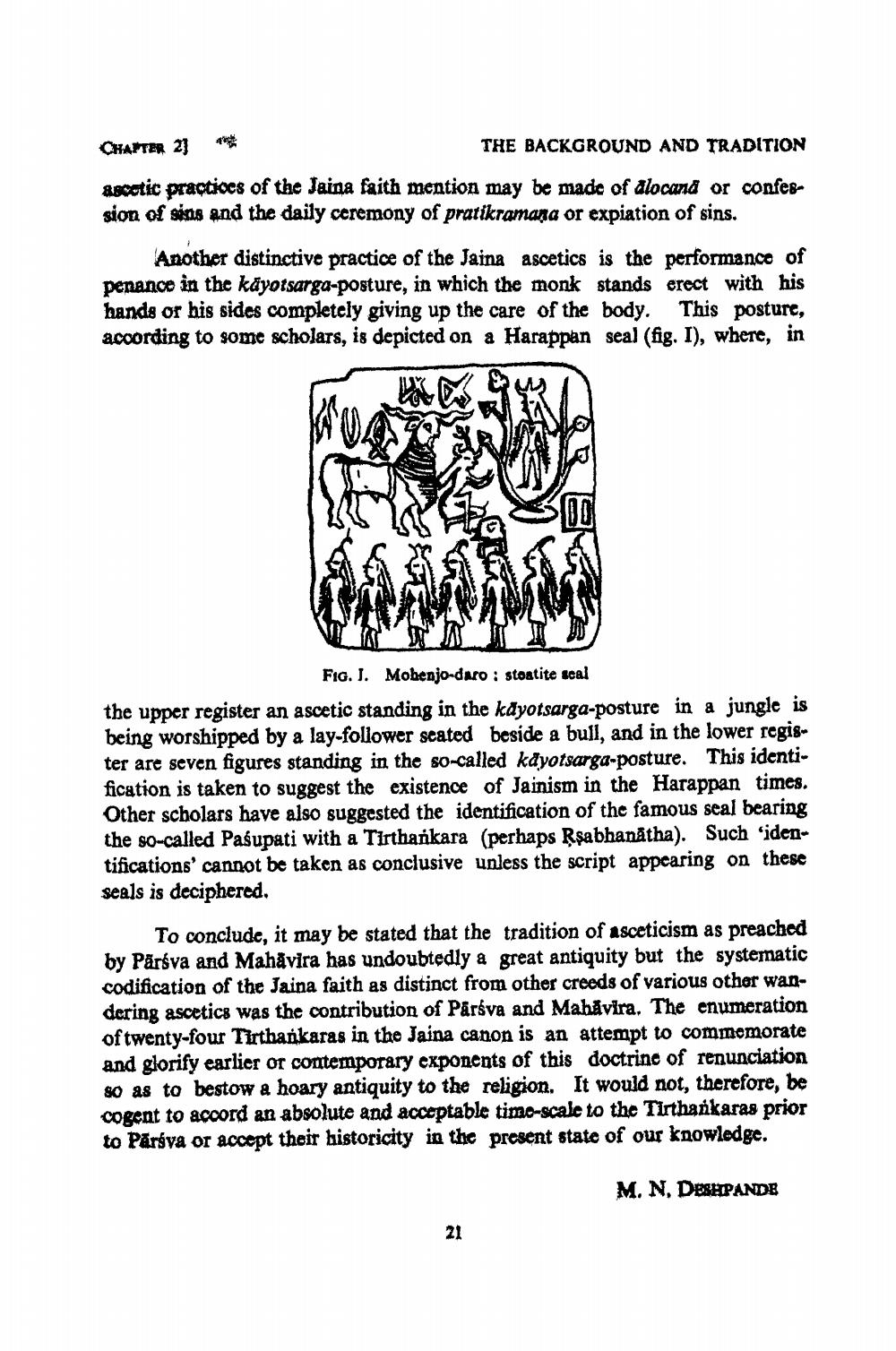________________
CHAPTER 2]
THE BACKGROUND AND TRADITION ascetic practices of the Jaina faith mention may be made of alocand or confession of sins and the daily ceremony of pratikramana or expiation of sins.
Another distinctive practice of the Jaina ascetics is the performance of penance in the käyotsarga-posture, in which the monk stands erect with his hands or his sides completely giving up the care of the body. This posture, according to some scholars, is depicted on a Harappan seal (fig. I), where, in
LAD
800
FIG. J. Mohenjo-daro: stoatite seal
the upper register an ascetic standing in the kayotsarga-posture in a jungle is being worshipped by a lay-follower seated beside a bull, and in the lower register are seven figures standing in the so-called kayotsarga-posture. This identification is taken to suggest the existence of Jainism in the Harappan times. Other scholars have also suggested the identification of the famous seal bearing the so-called Pasupati with a Tirthankara (perhaps Ṛsabhanatha). Such 'identifications' cannot be taken as conclusive unless the script appearing on these seals is deciphered.
To conclude, it may be stated that the tradition of asceticism as preached by Parsva and Mahavira has undoubtedly a great antiquity but the systematic codification of the Jaina faith as distinct from other creeds of various other wandering ascetics was the contribution of Parsva and Mahavira. The enumeration of twenty-four Tirthankaras in the Jaina canon is an attempt to commemorate and glorify earlier or contemporary exponents of this doctrine of renunciation so as to bestow a hoary antiquity to the religion. It would not, therefore, be cogent to accord an absolute and acceptable time-scale to the Tirthankaras prior to Pariva or accept their historicity in the present state of our knowledge.
M. N. DESHPANDE
21




